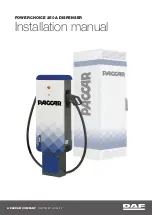
tion in their respective operating instructions.
This information is also available on line and,
depending on the vehicle equipment, digitally.
Personal data
Every vehicle is identified by a unique vehicle
identification number. Depending on the coun‐
try, this vehicle identification number can be
used by, for example, governmental authorities
to determine the identity of the owner. There are
other possibilities to use data collected from the
vehicle to identify the owner or driver, such as
the license plate number.
Therefore, data generated or processed by con‐
trol units may be attributable to a person or,
under certain conditions, become attributable to
a person. Depending on which vehicle data are
available, it may be possible to make inferences
about, for example, your driving behavior, your
location, your route or your use patterns.
Legal requirements regarding the disclosure
of data
If legally required to do so, manufacturers are, in
individual cases, legally obliged to provide gov‐
ernmental entities, upon request and to the
extent required, data stored by the manufac‐
turer. For example, this may be the case during
the investigation of a criminal offense.
Governmental entities are themselves, in individ‐
ual cases and within the applicable legal frame‐
work, authorized to read out data from the vehi‐
cle. In the case of an accident, information that
can help with an investigation can, therefore, be
taken from the airbag control unit, for example.
Operational data in the vehicle
This is data regarding the operation of the vehi‐
cle, which have been processed by control units.
This includes the following data, for example:
R
Vehicle status information such as the speed,
longitudinal acceleration, lateral accelera‐
tion, number of wheel revolutions or the fas‐
tened seat belts display
R
Ambient conditions, such as temperature,
rain sensor or distance sensor
Generally, the use of these data is temporary;
they will not be stored beyond the period of
operation and will only be processed within the
vehicle itself. Control units often contain data
memories for vehicle keys, for example. Their
use permits the temporary or permanent docu‐
mentation of technical information about the
vehicle's operating state, component loads,
maintenance requirements and technical events
or malfunctions.
Depending on the vehicle equipment, the follow‐
ing data are stored:
R
Operating status of system components,
such as fill levels, tire pressure or battery
status
R
Malfunctions or faults in important system
components, such as lights or brakes
R
System reactions in special driving situa‐
tions, such as airbag deployment or the inter‐
vention of stability control systems
R
Information on events leading to vehicle
damage
In certain cases, it may be required to store data
that would have otherwise been used only tem‐
porarily. This may be the case if the vehicle has
detected a malfunction, for example.
30 General notes
Summary of Contents for C 300 2021
Page 8: ...Left hand drive vehicles 6 At a glance Cockpit ...
Page 11: ......
Page 12: ...Instrument Display standard 10 At a glance Indicator and warning lamps standard ...
Page 16: ...14 At a glance Overhead control panel ...
Page 18: ...16 At a glance Door control panel and seat adjustment ...
Page 20: ...18 At a glance Emergencies and breakdowns ...
Page 500: ......
Page 501: ......
Page 502: ......
















































